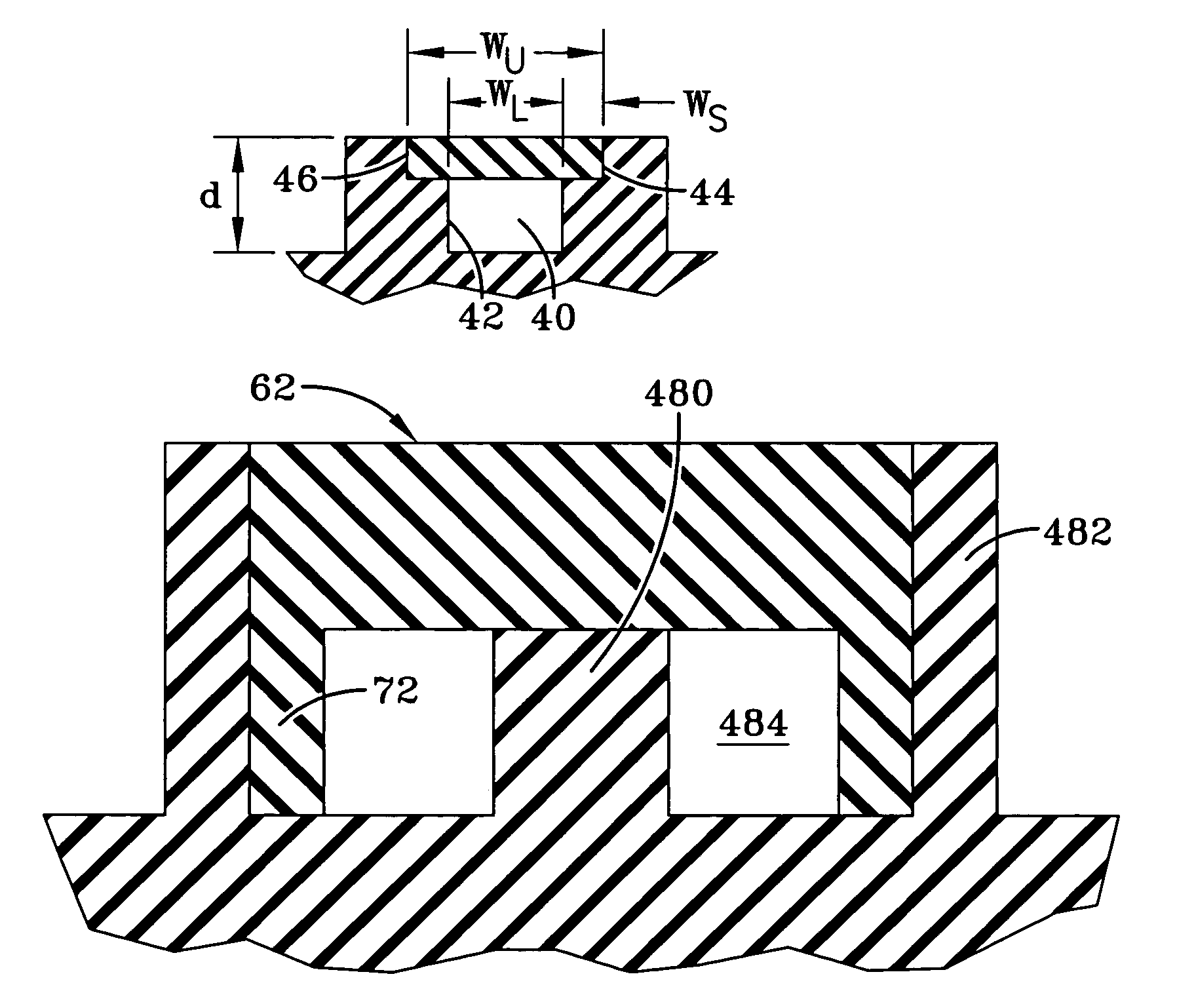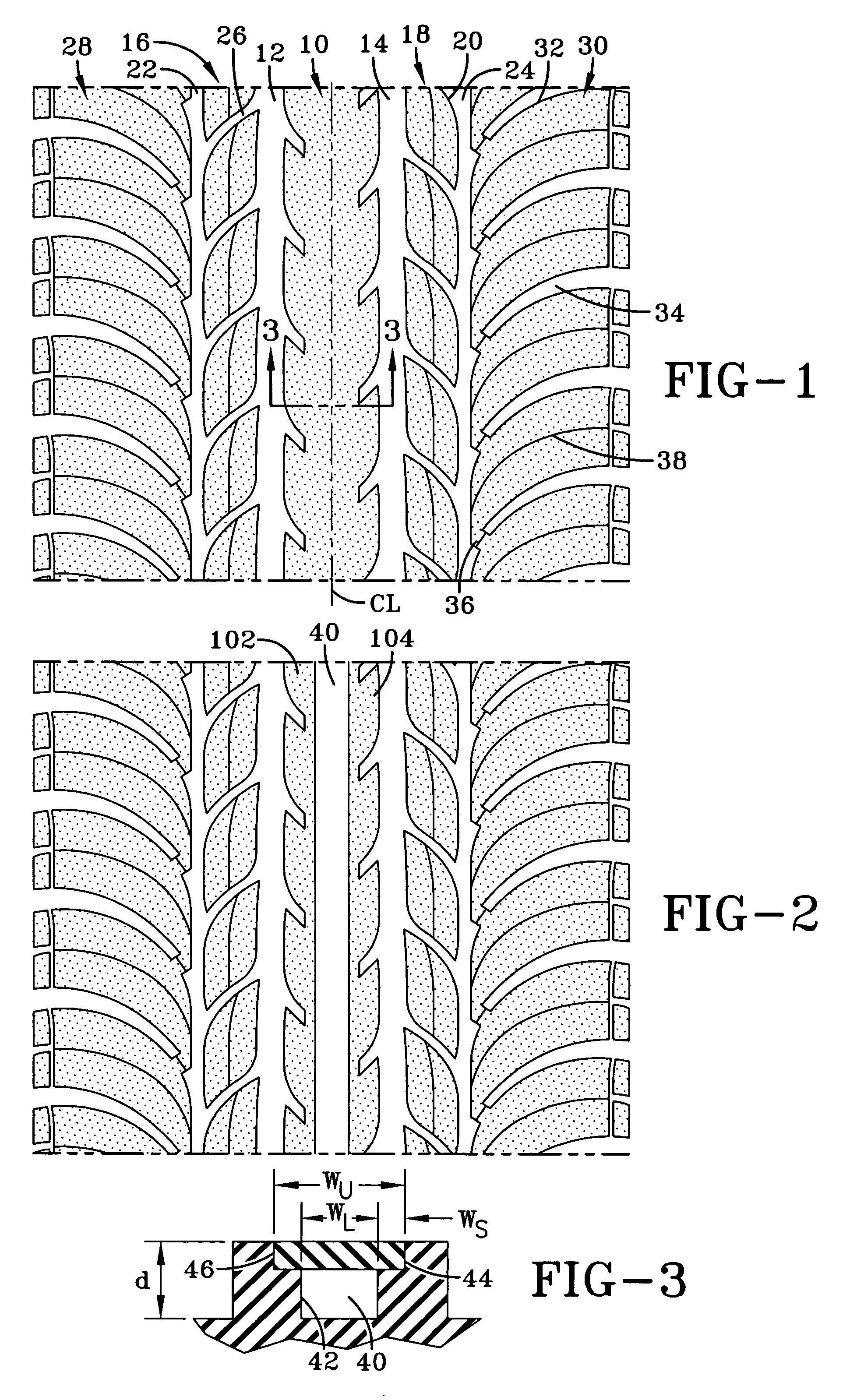Pneumatic tire
a pneumatic tire and tire technology, applied in special tyres, non-skid devices, transportation and packaging, etc., can solve the problems of increased tread wear, tire difficulty in manufacturing, and decreased hydroplaning characteristics, so as to optimize worn tire performance, maintain wet performance characteristics of tires, and similar tread performance
- Summary
- Abstract
- Description
- Claims
- Application Information
AI Technical Summary
Benefits of technology
Problems solved by technology
Method used
Image
Examples
Embodiment Construction
[0041]The following language is of the best presently contemplated mode or modes of carrying out the invention. This description is made for the purpose of illustrating the general principles of the invention and should not be taken in a limiting sense. The scope of the invention is best determined by reference to the appended claims.
[0042]A tire tread, located on the radially outer surface of a tire, is characteristically defined by a plurality of extending tread elements in the form of blocks and / or ribs. Such tread elements are formed by circumferentially extending and / or laterally extending grooves. In the exemplary tread of FIG. 1, at the unworn stage, the tread is defined by four circumferentially extending grooves, dividing the tread into five rows of tread elements. The tread element row 10 located on the tread centerline CL is a rib defined by circumferential grooves 12, 14. The tread element rows 16, 18 bordering the center tread element row 10 are a plurality of blocks 20...
PUM
 Login to View More
Login to View More Abstract
Description
Claims
Application Information
 Login to View More
Login to View More - R&D
- Intellectual Property
- Life Sciences
- Materials
- Tech Scout
- Unparalleled Data Quality
- Higher Quality Content
- 60% Fewer Hallucinations
Browse by: Latest US Patents, China's latest patents, Technical Efficacy Thesaurus, Application Domain, Technology Topic, Popular Technical Reports.
© 2025 PatSnap. All rights reserved.Legal|Privacy policy|Modern Slavery Act Transparency Statement|Sitemap|About US| Contact US: help@patsnap.com



